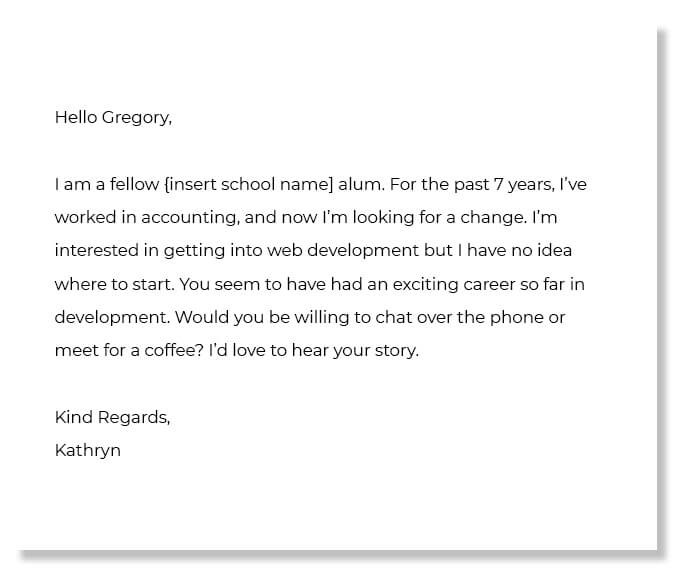This is a strategic, step-by-step guide of how to choose your next career.
So, you know you want to change careers, but you’re not sure which to choose. This can be frustrating and confusing because the options can seem scarce or overwhelming.
Don’t despair. We have you covered with this foolproof list of clear steps forward. You will need to do work that is both interior and exterior to yourself; all essential to find a new career path aligned with the life you want to live.
Be patient and be persistent. There are more opportunities and options out there than you can possibly imagine.
Step 1: Define your values
Sit down with a pen and paper and brainstorm. Freely write down what is important to you in your career. List the things that bring you alive and give you energy in the workplace and beyond.
Maybe you like working as a team, or working solo? Maybe you are a storyteller and enjoy using your creative side at work? Do you like managing others, connecting people, networking, teaching, or social media? Would working in a start-up environment excite or worry you? Perhaps, a well-known company with a prestigious name appeals? Do you feel more motivated working towards the greater good?
Your list could be short or get quite long. Keep returning to this exercise over a few days until you feel you have written everything down.
Next, divide your list into two. One column should list your top 5 “must-haves” and the other should contain all your “would-likes.”
Step 2: Envision your target lifestyle
Think about what you want your life to be like.
Would you prefer a job that has you traveling and on the road each month? Or is routine and proximity important? Would you like to work from home? Have you considered options such as being freelance, having your own company, or working in-house? What are your salary aspirations for now and in 5 years time? Would you accept a sedentary or more active work life?
Fit these lifestyle elements into your two lists from step one, adding only 3-5 more points in the “must-haves” section. Pop the rest in the “would-likes.”
Step 3: Think about your strengths
This is the final “interior work” step.
Sit down and list the things you enjoy doing in your current position. Write down what you love most in your hobbies, your schooling and any other experiences you have had. Think about your successes; what tasks and roles did you fill and enjoy in achieving them.
Your answers will be helpful, but also seek outside input. Send an email to 3-5 people that you know will respond respectfully. This could be your significant other, a friend, or a colleague. Ask them to respond with what they consider are your strengths. Also ask for an example of something you have done that has impressed them.
Seeking this outside perception can take some courage, but it is an important step in your process. You might be surprised and flattered by the feedback. Reflect on it all and add their answers to your list.
Now you have a strong overview of what you do best and what you enjoy. Attempt to order them by priority so that you can easily reference them. And start to ponder which skills are easily transferable between job positions and industries.
Your lists give you a clear set of criteria to scrutinise any new job. They may illuminate some obvious new career paths that you can put under the microscope in step 5. Regardless, these lists will serve as a guide moving forward.
Step 4: Network
Networking is key for your own personal learning and growth; as well as making connections and finding opportunities. Done well, it can be fun and interesting too..
There are so many different kinds of jobs and companies out there. There is no way you can know about all of them. Speaking to people in the workforce about what they do will expand your knowledge.
Put yourself out there.
Schedule coffee meetings, calls, or video chats with people in fields you are interested in.
You can do this in many ways. Reach out to people you already know in your personal or professional life, and chat about their careers. Go on LinkedIn (you should, it’s a great resource) and approach individuals working in positions that might interest you. Attend conferences where you can strike up conversations in real life. And use Social Media: remember that contacts and opportunities can sometimes come from the most unlikely of sources, so your online presence is very important. Be yourself, but always be mindful of the image you project.
Especially when reaching out to new contacts on LinkedIn, find a commonality with the person you are connecting with so they feel an affinity towards you. This will increase your chances of a reply.
Here is an example note:

Remember this: you are not asking for a job, you are just reaching out to learn about what they do and assess if their type of job might be a good fit for you. Also, know that most people love talking about themselves, so those who say yes will usually do so with enthusiasm.
Step 5: Ask the right questions
Ok! So now you are on the phone or face-to-face with a new contact. What do you say?
The good news is that you know what you want because of the priority lists you have worked on. Now you are looking for details that will help you understand if a particular career is for you.
Be sure to take notes.
Basic questions:
- How did you get to where you are today?
- What does a day at work look like for you?
- What do you enjoy most about your job?
- What is the most frustrating aspect of your job?
- What is your work-life balance like?
- What skills and traits are most useful for your position?
Also, ask a question or two more to identify if their job aligns with your “must-haves”.
We don’t advise that you ask questions about salary, to avoid appearing too noisy. Instead, research on a site like “Glassdoor” to find the industry standard.
Strategic plays:
Keep in mind that your new contact may have some insight about the professional landscape that you don’t. Tell them briefly about exactly what you are looking for in a career and ask if they have any suggestions for you. Tell them what you enjoy and what your strengths are to give them context.
Finally, ask them who else they recommend you talk to. This question is pure gold. Basically, it sets them up to introduce you to someone they know and thus provides an opportunity for you to put another person on your list of contacts.
After your conversation, be sure to follow up with a thank you note (by email is fine) and any information like your resume/CV, or anything pertinent to your conversation. Get in touch with them periodically to keep them in your network. And most importantly, be genuine.
Conclusion
The more people you connect with, the more you will start to see which careers are best for you. At some point in this process, a path will become clear and you will have the contacts to guide you.
Keep doing steps 4 and 5 until you have found the right career. Your networking will not only identify your new target career, but also help you understand the education, skills, or other preparation necessary to land that perfect position. And, you never know, you may get a job offer on the spot!









You got me when you said that you must consider how you want your life to look so you can find out if you will prefer traveling. This is a good tip for me because I’d like to study again to find a new career. What I actually want is to care for newborn babies and help new mothers. To be honest, I don’t feel fulfilled anymore with what I do because I feel like everything is routinary. I will make sure to find a nurse-midwifery program where I can enroll myself.